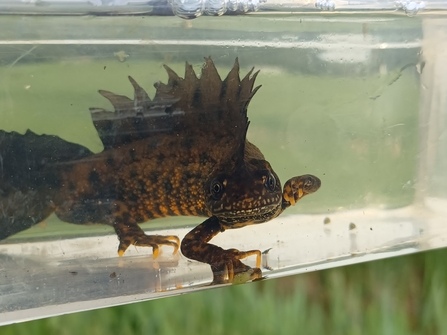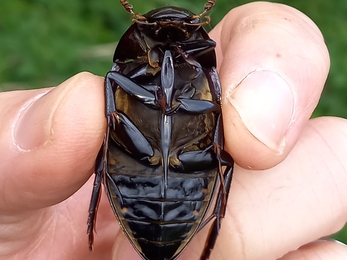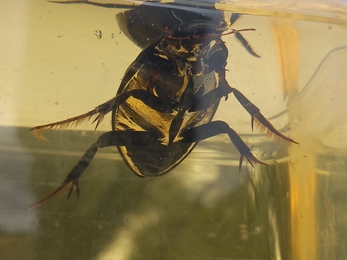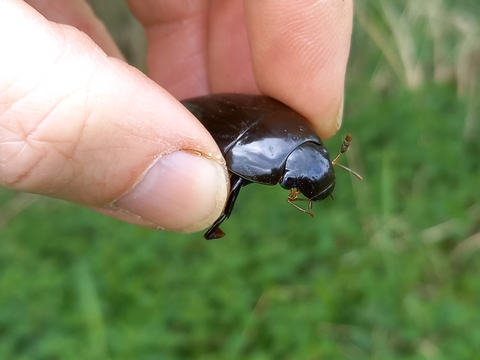One of the many species of conservation importance in the Great Fen is the great crested newt. This spring, various ponds in the Great Fen were surveyed, to capture and photograph the newts. This is done to keep track of individual animals and so monitor their movements, gathering data on the populations at nature reserves such as Ramsey Heights and Woodwalton Fen.
This species of newt lives for up to 15 years and every individual has a unique belly pattern. One piece of equipment we can use to survey for newts is the Dewsbury trap, a type of live trap. The survey method involves sinking the traps in a pond the day before and then collecting them the following morning to inspect the ‘catch of the day.’ Newts are not the only wildlife encountered during these surveys; smooth newts, 10-spinned sticklebacks, dragonfly larvae and water beetles are also captured.








